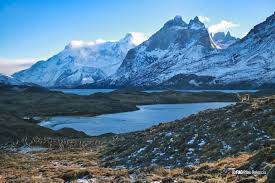Arctic Meltdown: North American Responses to Changing Polar Environments
The Arctic is experiencing an unprecedented meltdown, and the consequences of this environmental crisis are not limited to the polar regions alone. North and South America are directly affected by the changing polar environments, and it is crucial that we understand and respond to these contemporary climate issues in a unified manner. In this article, we will explore the challenges faced by North and South America in the face of the Arctic meltdown and discuss the importance of promoting unity and taking action.
-
The Arctic meltdown is accelerating at an alarming rate, leading to rising sea levels, extreme weather events, and the loss of vital wildlife habitats. These changes have widespread consequences for North and South America, including increased flooding, coastal erosion, and the disruption of ecosystems.
-
The melting ice in the Arctic has the potential to significantly disrupt ocean currents, which play a crucial role in regulating global climate patterns. This disruption can lead to unpredictable weather patterns, affecting agriculture, water resources, and even human health.
-
It is important for North and South America to come together and address these challenges collectively. By sharing knowledge, resources, and expertise, we can develop effective strategies to mitigate the impact of the Arctic meltdown and build resilience in our communities.
-
Governments, businesses, and individuals all have a role to play in responding to the changing polar environments. Governments can implement policies to reduce greenhouse gas emissions and promote sustainable practices. Businesses can invest in renewable energy and adopt environmentally-friendly practices. Individuals can make small changes in their daily lives, such as reducing energy consumption and supporting local initiatives.
-
Collaboration between North and South America is crucial in addressing the Arctic meltdown. By working together, we can pool our resources, share best practices, and develop innovative solutions to protect our environment and ensure a sustainable future for generations to come.
-
Education and awareness are key in motivating individuals to take action. By informing ourselves about the causes and consequences of the Arctic meltdown, we can better understand the urgency of the situation and make informed decisions in our personal and professional lives.
-
It is important to recognize the interconnectedness of our planet. The effects of the Arctic meltdown are not confined to the polar regions alone but have far-reaching impacts worldwide. By promoting unity and cooperation, we can collectively work towards finding solutions that benefit all.
-
North and South America are home to diverse ecosystems and unique wildlife. The Arctic meltdown poses a threat to these natural treasures, and it is our responsibility to protect and preserve them for future generations.
-
Investing in renewable energy sources such as wind, solar, and hydroelectric power can help reduce our dependency on fossil fuels and mitigate climate change. By supporting clean energy initiatives, we can contribute to a greener and more sustainable future.
-
Sustainable agriculture practices are essential in ensuring food security in the face of changing climate patterns. By promoting organic farming, reducing food waste, and supporting local farmers, we can build resilient food systems that are less vulnerable to the impacts of the Arctic meltdown.
-
The Arctic meltdown presents opportunities for innovation and technological advancements. By investing in research and development, we can find new solutions to mitigate the impacts of climate change and build a sustainable future for North and South America.
-
It is important to engage in dialogue and exchange ideas with indigenous communities who have long-standing knowledge of the Arctic and its ecosystems. Their traditional practices and wisdom can offer valuable insights into how we can adapt and respond to the changing polar environments.
-
Governments should prioritize the protection and conservation of natural areas, including national parks and protected areas. By preserving these spaces, we can safeguard biodiversity and provide habitats for wildlife, helping to mitigate the impacts of the Arctic meltdown.
-
As individuals, we can make a difference by reducing our carbon footprint, supporting sustainable initiatives, and advocating for change. Small actions, such as using public transportation, recycling, and conserving water, can have a significant positive impact when multiplied across communities.
-
In conclusion, the Arctic meltdown poses significant challenges for North and South America, but by working together, we can overcome them. It is essential to promote unity, take action, and develop skills to address contemporary issues in climate and environment. Let us come together, share this article, and inspire others to join the movement for a sustainable future. Together, we can make a difference! #ArcticMeltdown #ClimateAction #NorthSouthUnity




